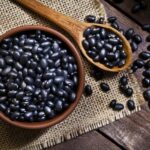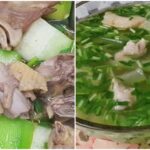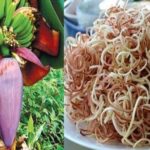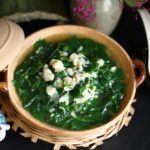In traditional folk wisdom, there is a saying that “to protect your health, pay attention to nurturing your kidneys.” The kidneys play a vital role in the human body, and taking care of kidney health lays the foundation for overall wellness. Healthy kidneys efficiently filter blood, removing toxins and waste from the body. Conversely, when kidneys are weakened, the detoxification function is impaired, leading to various health issues, accelerated aging, and a decline in the quality of life.
Today, we would like to introduce to you two delicious and nutritious dishes that are specifically beneficial for kidney health. If you have middle-aged or elderly family members, incorporating these dishes into your regular meals can help boost their overall health and nourish their kidneys.
Braised Eel with Winter Melon
Braised eel with winter melon is a nourishing dish, ideal for middle-aged and elderly individuals. It not only offers a delightful flavor but also boasts remarkable kidney-boosting properties. In traditional medicine, eel is considered a food that nourishes the liver and kidneys, replenishes blood, and has a calming effect on the body. It also enhances the function of the spleen. With its high-quality protein content, eel strengthens the immune system and aids in recovery from fatigue. Additionally, eel is rich in calcium, iron, and zinc, essential minerals for bone, teeth, and blood health. Vitamins A, B, and E found in eel also contribute to its antioxidant and immune-boosting properties.
Winter melon, available year-round, is known as the “king of kidney tonics.” It not only benefits the kidneys but also supports the liver in detoxification. Consuming winter melon helps the body eliminate excess fluid, thereby promoting the excretion of uric acid and maintaining healthy kidney function. The protease inhibitor in winter melon helps lower blood pressure, reducing the strain on the kidneys, while also removing heat toxins from the body, which helps alleviate kidney inflammation and damage.
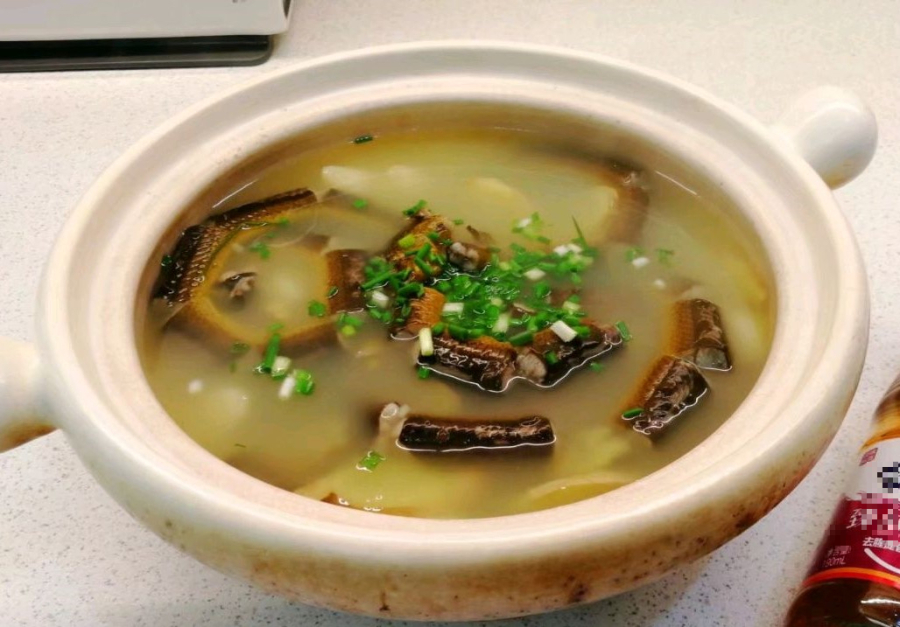
Braised Eel with Winter Melon
Ingredients for Braised Eel with Winter Melon
350g eel
200g winter melon
3-5 cloves garlic
1 tablespoon cooking wine
Sliced ginger
Salt to taste
A pinch of pepper
1 scallion
Preparation for Braised Eel with Winter Melon
Step 1: After purchasing the eel, ask the seller to thoroughly clean it, removing all the slime and internal organs. Once you get home, rinse the eel again to get rid of any remaining blood. Use 2 tablespoons of salt to rub the eel for a short time to eliminate impurities and ensure it is completely clean. Next, make small cuts along the eel’s body and cut it into sections approximately 5cm long. Place the eel pieces in a bowl, add a little salt, pepper, and cooking wine, then mix well and marinate for about 30 minutes to allow the eel to absorb the flavors.
Step 2: While the eel is marinating, peel and wash the winter melon, then cut it into bite-sized pieces. Once the eel has marinated sufficiently, it’s time to start cooking. Heat a pan with a little oil, and fry the marinated eel pieces along with the garlic cloves until the eel turns golden brown on both sides.
Step 3: After frying the eel, transfer it to a pot and add just enough boiling water. Cover the pot and bring it to a boil over high heat. Once it reaches a rolling boil, reduce the heat to low and simmer for about 20 minutes. During the braising process, don’t forget to add a little salt, pepper, and sliced ginger to enhance the flavor of the dish.
Step 4: After 20 minutes of cooking, add the winter melon to the pot and continue to simmer over low heat for another 10 minutes. Once done, turn off the heat and serve the braised eel and winter melon in a bowl. Optionally, you can sprinkle some goji berries and chopped scallions on top to enhance the presentation and nutritional value of the dish.
Final Product: Braised Eel with Winter Melon
The braised eel with winter melon is now ready, and the preparation process is relatively simple. The eel meat is tender, flavorful, and naturally sweet, blending beautifully with the refreshing taste of winter melon. Eel is not only rich in protein, vitamins, and minerals but also has kidney-boosting properties, strengthens bones and joints, and supports muscle development. Winter melon, with its cooling properties, helps clear heat, detoxify the body, promote diuresis, and reduce inflammation. The combination of winter melon and eel not only creates a delicious flavor but also balances the nutrition, making this dish an ideal choice for middle-aged and elderly individuals.
Peanut and Taro Sweet Soup
Peanut and taro sweet soup is not just a tasty dessert but also a highly nutritious dish, perfect for maintaining the health of middle-aged and elderly individuals. In traditional medicine, peanuts are referred to as the “fruit of longevity” due to their neutral nature and sweet taste. They are believed to nourish the blood, tonify the spleen, moisten the lungs, resolve phlegm, and calm the mind.
Peanuts are an excellent source of protein, vitamins, and minerals, significantly contributing to the nourishment of the body. With their abundant plant-based protein, peanuts help enhance the immune system and facilitate tissue repair. Additionally, the unsaturated fatty acids in peanuts are beneficial for cardiovascular health.
The minerals found in peanuts, such as calcium, iron, and zinc, have positive effects on bone, teeth, and blood circulation health. Vitamin E in peanuts acts as an antioxidant and boosts the immune system. Thanks to their composition of fats, lecithin, and vitamins A, B, E, calcium, phosphorus, and iron, peanuts also effectively support kidney health.

Peanut and Taro Sweet Soup
Ingredients for Peanut and Taro Sweet Soup
300g peanuts
1/2 taro root
20-30g rock sugar
200g unsweetened fresh milk
Preparation for Peanut and Taro Sweet Soup
Step 1: Place 300g of peanuts in a large bowl and cover them with water. Soak for about 1 hour to soften the shells. After soaking, gently rub the shells to remove the outer skin. Alternatively, if you want to save time, you can boil the water and add the peanuts for about 3 minutes. When the water cools down, the shells will come off easily.
Step 2: Transfer the shelled peanuts to a pressure cooker, add just enough water, and throw in two large pieces of rock sugar (totaling approximately 20-30g). Cover the cooker and simmer over low heat for about 30 minutes until the peanuts are soft and fully cooked.
Step 3: While the peanuts are cooking, prepare the taro by peeling and washing half a root. Cut the taro into small pieces and steam for about 20 minutes until they are soft and easily pierced with a chopstick.
Once the peanuts are done, take a few spoons of them and mix them with the steamed taro. Use a pestle to mash them together, or you can blend them with 200g of unsweetened fresh milk in a blender until smooth.
Step 4: Transfer the remaining cooked peanuts from the pressure cooker to another pot. Add the taro-peanut mixture and 200g of fresh milk (if you used it in the blender, you can skip this step). Place the pot on the stove, stir well to combine the ingredients, and bring to a boil over medium heat. Once the mixture boils and emits a delightful aroma, serve the peanut and taro sweet soup in a bowl and enjoy!
Final Product: Peanut and Taro Sweet Soup
At first glance, the peanut and taro sweet soup presents a bowl of opaque white liquid with sparkling peanuts floating on the surface. However, the subtle fragrance and creamy texture created by the combination of taro and milk will surprise you. The peanuts, which seem to retain a dreamy texture, quickly melt in your mouth, delivering an extraordinary sensory experience.
The Super Seed: A Protein-Packed Punch, But A No-Go For Some
“King of Iron” is a mighty moniker for a seed that boasts superior nutritional value with protein levels surpassing even that of an egg. But this humble hero also packs a punch when it comes to cooling off during hot summer days. However, there are five groups of people who should consume this seed with caution.
The Ultimate Flower: A Natural Remedy for Optimal Health
Banana blossom, also known as banana heart, is a culinary staple and a medicinal treasure in Southeast Asian cultures. This unique ingredient, derived from the banana plant, offers a plethora of benefits that extend beyond its delicious flavor. In traditional medicine, banana blossom is revered for its therapeutic properties, believed to treat a range of ailments.

























